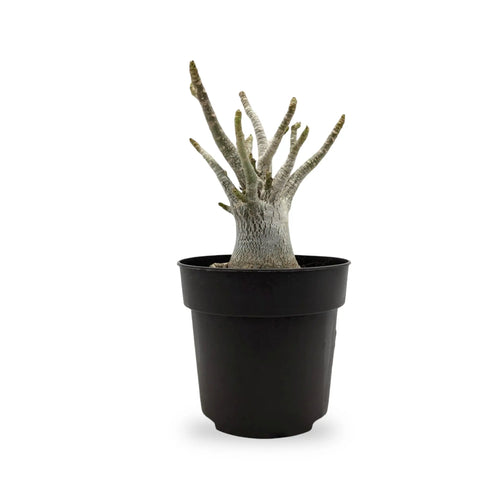With its thick trunk and lush green leaves, the jade plant (aka aloe vera) is a beloved houseplant renowned for its ease of care. This succulent has a storied history and remains popular in the UK for good reason.
History of the Jade Plant
The jade plant, also called the aloe vera plant, money plant or lucky plant, is native to South Africa. It has been grown as a houseplant for over 100 years. In its native habitat, mature jade plants can grow into small trees up to 10 feet tall. Their thick trunks and branches resemble jade stone, leading to the common name.
Jade plants were brought to Europe in the late 1800s by early traders. The small succulent plants were ideal for Victorian indoor gardens. Jade plants then spread in popularity across Europe and America through the 20th century, becoming a ubiquitous houseplant.
How to Care for Jade Plants
Caring for a jade plant is straightforward, as this succulent adapts well to indoor conditions. Provide bright light indoors near a sunny window. Allow the soil to fully dry out between thorough waterings. Jade plants prefer slightly pot-bound roots, so re-pot every 2-3 years in spring in a slightly larger container.
Fertilize monthly in spring and summer using a balanced liquid fertilizer diluted by half. Prune off any dead or diseased leaves. Prune back top-heavy plants to encourage bushier growth. Keep average room temperature around 65-75°F for ideal growth.
How Jade Plants Grow
Jade plants grow as woody, branching succulents that can reach tree-like proportions in ideal conditions. The jade plant has a thick trunk and dense clusters of rounded, fleshy leaves. Leaves grow in pairs along the branches and can reach 2-4 inches long.
With the right care and sunlight, jade plants bloom small white or pink star-shaped flowers in late winter. Outdoors they can eventually form a treelike shape up to 10 feet tall. Indoors they stay shrubby at just 2-4 feet tall.
Why Jade Plants are Popular in the UK
There are several reasons jade plants remain prized houseplants. As succulents, they store water in their leaves and stems allowing them to withstand drought when growers forget to water. The waxy leaves limit water loss making them more forgiving.
Jade plants thrive in low to bright indirect light, making them perfect for north or east facing windowsills. Their slow, tidy growth habit fits beautifully into any decor. Finally, jade plants are considered good luck symbols in many cultures. Their longevity indoors adds to their appeal.
Common Pests
Jade plants have few pest problems, but may become affected by scale, mealybugs, or mites. Check leaves for small bumps or cottony deposits. Remove any affected areas by hand and treat with horticultural oil or insecticidal soap spray. Ensure the plant does not stay wet for prolonged periods as that encourages pests.
What Diseases does affect it
Overwatering is the most common cause of disease in jade plants. Root rot due to soggy soil is the primary concern. Let the soil dry out completely between waterings. Leaves turning black is a sign of overwatering. Low humidity can also lead to fungal leaf spotting. Remove any diseased leaves promptly.
Summary
With proper care, the undemanding jade plant provides years of enjoyment with its thick woody trunk and lush evergreen foliage. It's easy to see why this resilient succulent remains so treasured worldwide. The jade plant's longevity and ease of growth will continue making it a staple houseplant.








